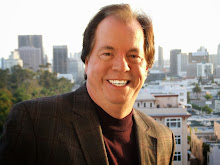
By Bill Kalmar
For some, Labor Day signals the end of summer as preparations for autumn and the accompanying holidays begin. As is customary in some locales, warm weather clothes, including one’s white wardrobe and shoes, are returned to the closet until next spring. Children and students go back to school, much to the delight of their parents, and hopefully to the excitement of their teachers.
Chances are one of the kids’ first assignments will be to draft a report on the activities of their summer vacation. Not to be left out of this assignment, I thought it appropriate that I pen a few lines about one of our recent trips. There were no death-defying rides on some monster roller coaster, no surfing in shark-infested waters or aerial descents with a parachute from a plane, just a sensible trip to Chicago for my wife and me.
What made the trip so memorable was something I wrote about in my August column for QualityInsider (Online at www .qualitydigest.com/content/quality-insider.) The column recounted several encounters with poor service, and thus I concluded that I was in fact a magnet for service personnel and organizations that don’t practice performance excellence. Well, traveling to Chicago convinced me that somehow I had been demagnetized, at least on this one occasion.
Off to a good start
Our trip began early on a weekday as we departed our home in Lake Orion, Michigan. Our first stop was The Big Apple Bagel. As we opened the door, the aroma of fresh bagels and coffee wafted into our nostrils. Three upbeat and smiling clerks greeted us with a hearty good morning--and this was 7 a.m. It’s no wonder that this particular location is well frequented by regulars and transients alike. We left, bagels and coffee in hand, knowing that our trip was off to a great start.
Motoring to Chicago took us on the Indiana Toll Road. Often, those manning the toll booths are cranky and don’t engage in many pleasantries. Perhaps the toll road commission had everyone read Jim Collins’ book Good to Great ( Harper Collins, 2001 ) because we were met with friendly greetings at each booth. Somehow that lessened the strain of doling out a couple of bucks every 50 miles or so.
We arrived at our hotel, blocks away from the Magnificent Mile, just after noon. Our room wasn’t ready, so to take the sting off our having to wander the streets of the Windy City in our traveling clothes, the hotel gave us a room upgrade.
After a five-hour trip, which included the last 30 minutes in typical Chicago traffic, we were ready for lunch. One of our favorite haunts in the Toddling Town is Gibson’s Steak House on Rush Street. Sitting on the enclosed street-level porch gives one a view of the horse-drawn carriages trekking through town and the hundreds of shoppers toting their bags laden with one-of-a-kind purchases that can only be found in Chicago. It seems that no one in the town realizes that there is a recession underway. The streets were crowded, and restaurants and hotels were at capacity.
Our lunch was an epicurean delight even though my medium-rare steak was a bit overcooked. Our waitress, Deena, noticed the lack of rare red beef on my plate and suggested that she would have another one prepared. I politely declined and stated that it was still just fine. When our bill arrived, Deena had unexpectedly taken the cost of my steak off the bill. She did this without my having to raise an eyebrow or growl about the preparation. This signaled to me that I was in the process of being demagnetized.
After lunch we wandered into the Neiman Marcus store. Prior to our trip, we had received a phone call from a Neiman Marcus employee, Naomi, indicating that some items I might be interested in were on sale, but that after the first of the month the prices would be increasing. As we walked into Naomi’s sales area, she greeted us by name and was genuinely excited to see us again. Our last visit had been the previous year, but her ability to remember names and faces is uncanny. While in the store, I noticed that Naomi maintained a huge three-ring binder of the names and phone numbers and past purchases of all her customers. Her practice of contacting customers personally when sales develop is no doubt one of the reasons why Neiman Marcus regularly posts sales increases and profits while other stores are incurring losses.
Those of you who are watch aficionados like me would certainly enjoy window-shopping at the Tourneau store in the Water Tower. Being greeted by name by Michael, the salesperson who sold me a watch three years ago, is something that still makes an impression on me. Like Naomi at Neiman Marcus, Michael remembers names and even the type of watch I purchased. Maybe he anticipates me buying another one shortly?
Quality experiences continue
The next day saw us walking over to another of our favorite restaurants--Tucci Benucch. It’s a small Italian restaurant in the Bloomingdale’s building. For us, a trip to Chicago isn’t complete without enjoying the great salads at this little nook on the sixth floor. To our surprise and disappointment, the restaurant had now morphed into “Frankie’s Pizza,” although we were told that it was under the same management. We dined, but it was difficult to hide my disillusionment at losing our favorite lunch haunt. Our waitress must have picked up on my vibes because when we returned home there was a message on our voice mail from the restaurant’s manager indicating that many of the same menu items from Tucci Benucch could still be ordered if we asked. Just another indication to me how embedded customer service is in Chicago.
Even the cabbies get it!
Cab drivers were equally pleasant and customer-focused even though it took us several days to catch our breath from the Indy 500-inspired drivers who dart around the downtown area as if they were vying for the pole position for the next race.
As you can see, our voyage to the Windy City was an example in performance excellence. And it didn’t end there. When we returned home, I received an e-mail from The Wall Street Journal, which is indicative of its strong focus on customer service. Here is an excerpt: “We see that delivery of your Wall Street Journal was scheduled to resume today after a temporary suspension and are following up to check that it did.” Wow! Is that great service or what?
In other news
I hope that you’ll permit me to opine on some other topics.
I recently purchased a polo shirt from Macy’s and attempted to have Lord & Taylor match the price. I wrote Lord & Taylor about the incident, and their reply indicated that I would hear from “the appropriate department and someone will be in touch with you within five to seven business days.”
After a wait of three weeks, I contacted the store again. A reply finally arrived indicating that “Lord & Taylor does not have a practice of matching prices.” Perhaps the delay was attributed to the management formulating a policy? Who knows, but it tells me a lot about how it resolves customer service questions.
More and more defective products continue to enter our country from China. We are now told to check our tire pressure in the wake of a recall of as many as 30 million replacement rubber valve stems. These defective parts can crack prematurely and cause tires to lose air. At highway speeds, this loss of air could result in a loss of control with a resultant crash. It’s time we boycott Chinese products until such time as that country raises its level of quality. At this juncture, what with all the lead-based products that we have banned, I think a total ban on products from China isn’t out of the question. What do you think?
If you have noticed a downturn in customer service in some segments, let me offer an explanation. Here in Michigan, there are thousands of automotive professionals who have been outsourced, downsized, or as we say--fired! These highly qualified people now find themselves working in positions much below their level of expertise, and as such, their attitude and demeanor in dealing with customers isn’t what you would characterize as exemplary. As we frequent the various restaurants and stores in our area, I often question how long the person has been employed. What I’m finding is that there are many college grads and MBAs who are now flipping burgers. This no doubt does not make for a pleasant experience for them or the customers.
Speaking of restaurants, the Ruby Tuesday chain is looking at changing its theme by eliminating the 1980s-style décor of black-and-white checked tablecloths and Tiffany-style lamps with brass rails. There will be a new menu and a more contemporary look. Let’s hope that the consultants who are working on this project aren’t the same ones who worked on Bill Knapp’s restaurant chain. In my opinion, changing the theme and focus of this chain ultimately put them out of business. How I miss those chocolate cakes!
What would one of my articles be without a plug for my favorite hotel--The Ritz-Carlton. The J.D. Power & Associates 2008 North America Hotel Guest Satisfaction Index Study finds that the Ritz-Carlton won again as the top-scoring chain in the luxury category. Others that led in the survey included Embassy Suites in the upscale category, Hyatt Place for mid-scale full service, Drury Inn & Suites for mid-scale limited service, and for the seventh consecutive year, Microtel Inns & Suites took top honors in the economy/budget category.
Back to the hammock
Well, as I’m writing this article, the dog days of summer are coming to an end and cool nights are upon us once more. Hanging out in the hammock is still my top choice for a restful afternoon, and I hope all of you have that special place where you can relax and maybe, if I’m not being too presumptuous, ponder these words. If something resonated with you or some of my rants irritated you, please let me know by writing to the e-mail address at the bottom of this page. I personally respond to every e-mail. Until next time, remember the quote from Jonathan Swift: “You cannot reason a man out of something that he did not reason his way into.”
And by the way, as a result of our trip to Chicago, where we experienced wonderful service, I no longer attract metal shavings to my body. I have been poor-service demagnetized--at least for the moment.


